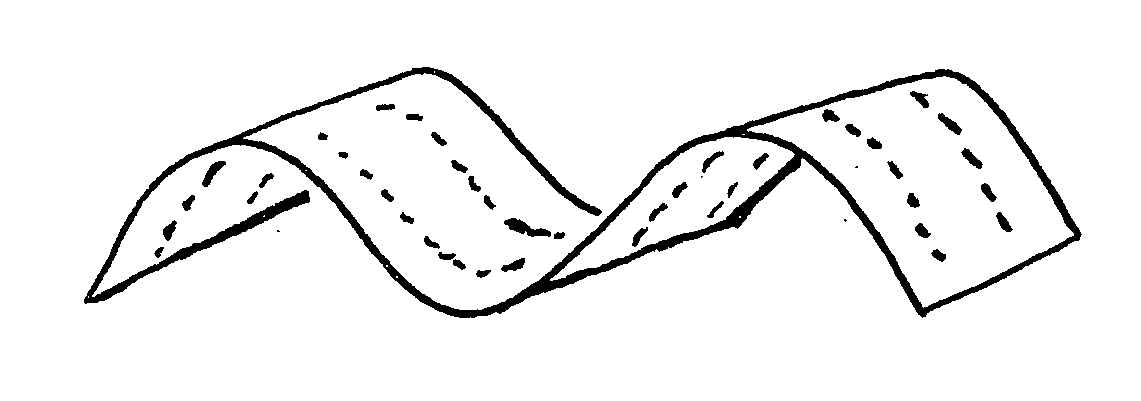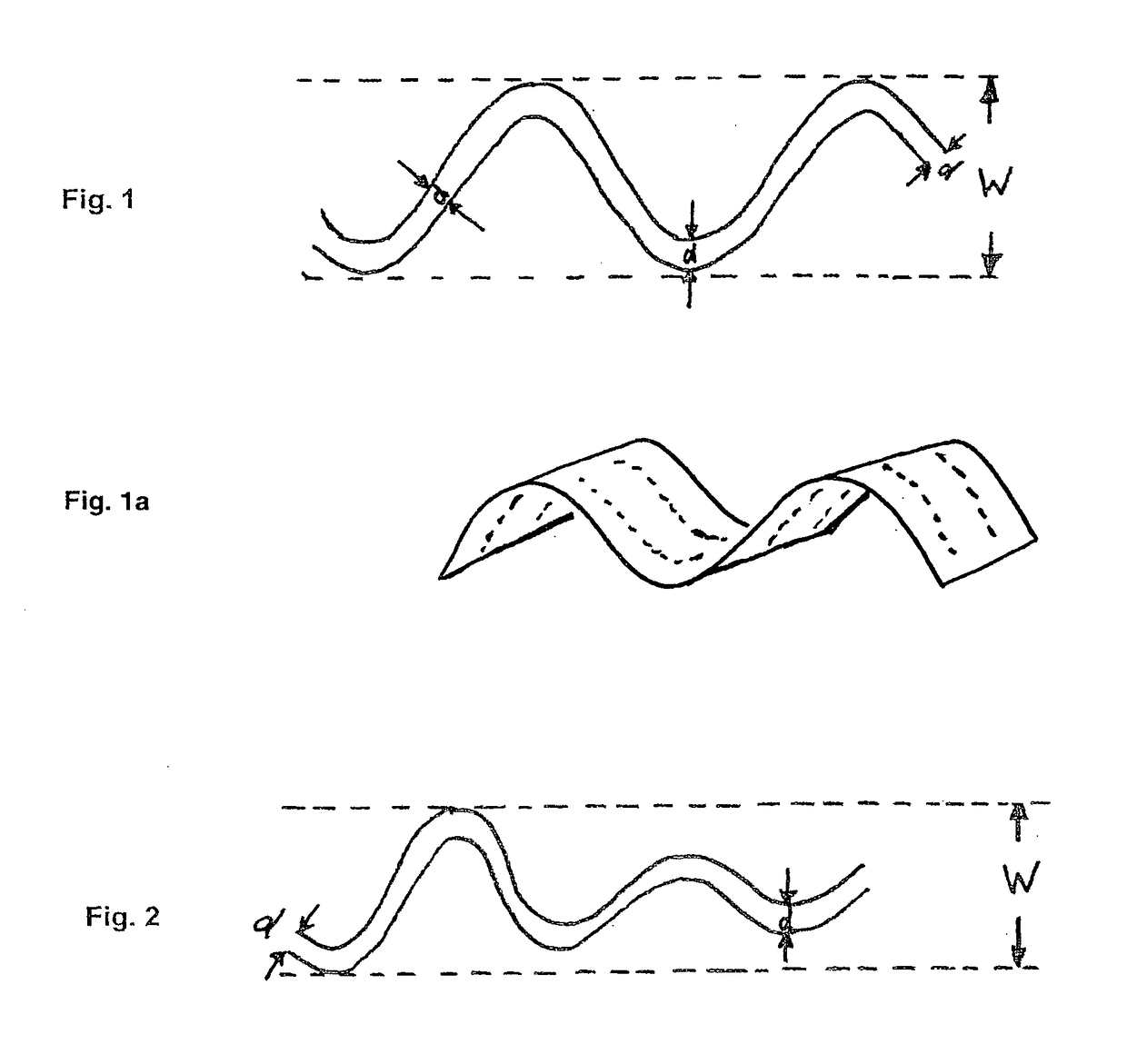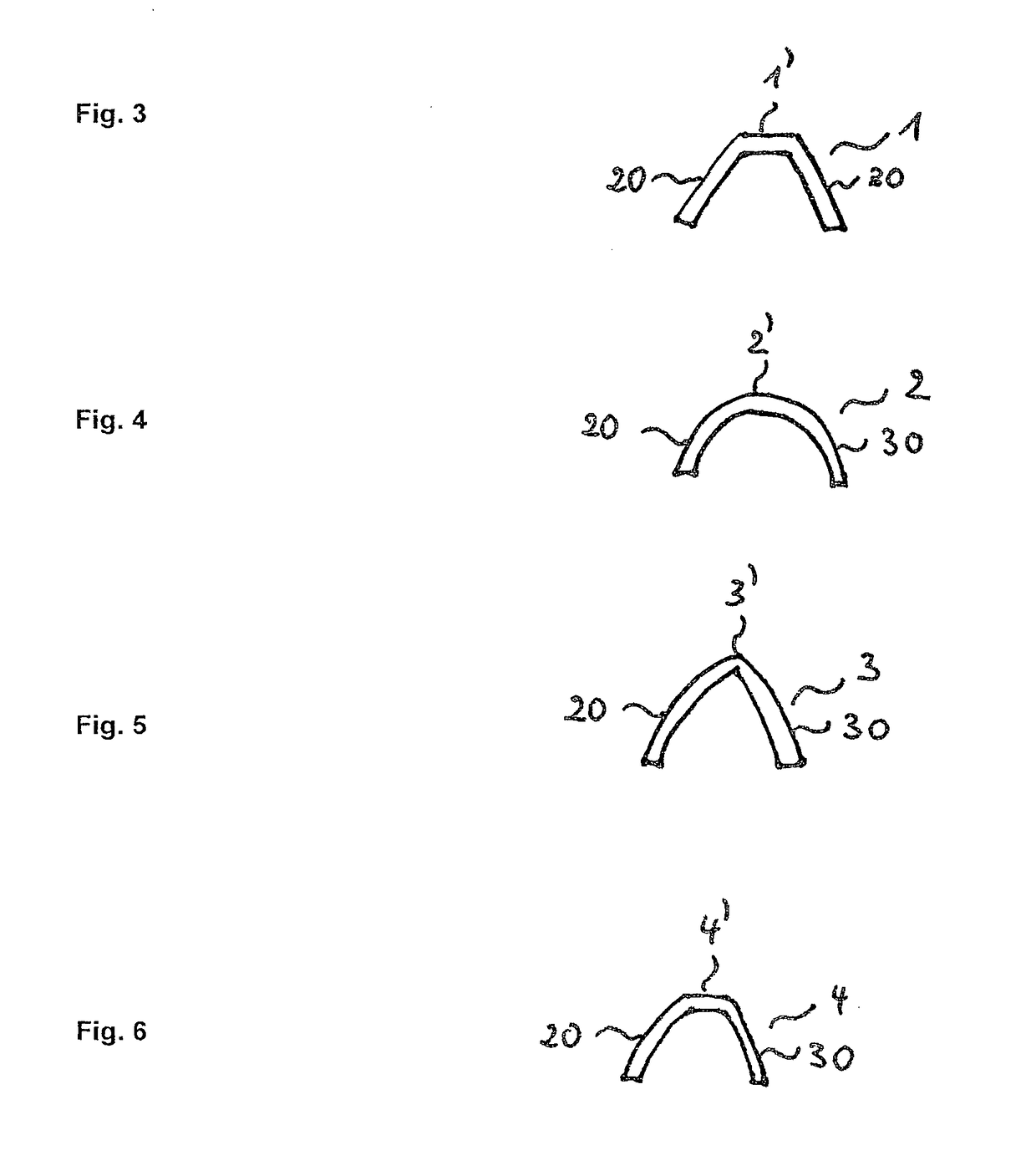Method of manufacturing a corrugated wood element, a corrugated wood element and its uses
a manufacturing method and technology of corrugated wood elements, applied in the field of manufacturing corrugated wood elements, corrugated wood elements and their uses, can solve the problem that the trough cannot be removed without destroying the wood element, and achieve the effect of improving load capacity and cost-effectiveness
- Summary
- Abstract
- Description
- Claims
- Application Information
AI Technical Summary
Benefits of technology
Problems solved by technology
Method used
Image
Examples
Embodiment Construction
[0085]The following terms in quotation marks are defined in the meaning of the invention.
First Aspect of the Invention: Method of Making a Wavy Wood Element (B) According to the Invention
[0086]In a first aspect, the invention relates to a method for making a wavy wood element (B) from a planar or non-planar wood element (A), wherein the method comprises at least steps (H1) to H4):[0087](H1) providing a planar or non-planar wood element (A), which comprises fibers and lignin on or between the fibers; preferably, the planar or non-planar wood element (A) does not comprise an adhesive;[0088](H2) heating the wood element (A) to a temperature which is sufficient to soften or melt at least a part of the lignin;[0089](H3) deforming the wood element heated in step (H2) such that a wavy wood element (B) is formed;[0090](H4) cooling the wood element deformed in (H3);
characterized in that the deforming in step (H3) is performed such that the ratio of the wave height to the thickness of the wav...
PUM
| Property | Measurement | Unit |
|---|---|---|
| temperature | aaaaa | aaaaa |
| temperature | aaaaa | aaaaa |
| temperature | aaaaa | aaaaa |
Abstract
Description
Claims
Application Information
 Login to View More
Login to View More - R&D
- Intellectual Property
- Life Sciences
- Materials
- Tech Scout
- Unparalleled Data Quality
- Higher Quality Content
- 60% Fewer Hallucinations
Browse by: Latest US Patents, China's latest patents, Technical Efficacy Thesaurus, Application Domain, Technology Topic, Popular Technical Reports.
© 2025 PatSnap. All rights reserved.Legal|Privacy policy|Modern Slavery Act Transparency Statement|Sitemap|About US| Contact US: help@patsnap.com



